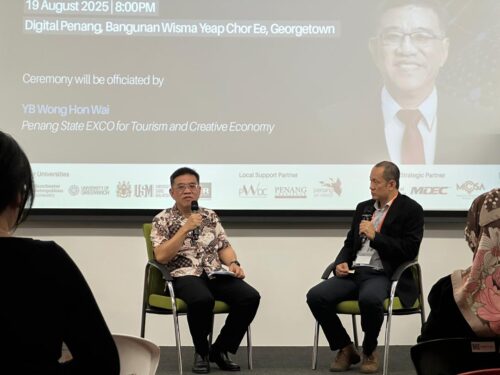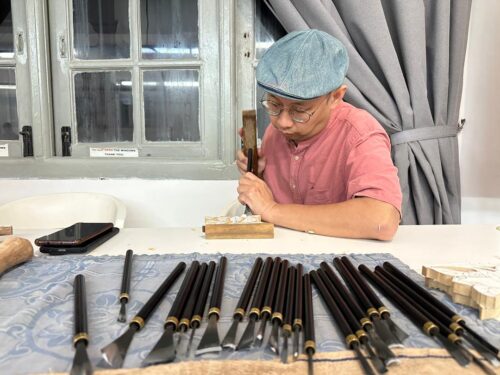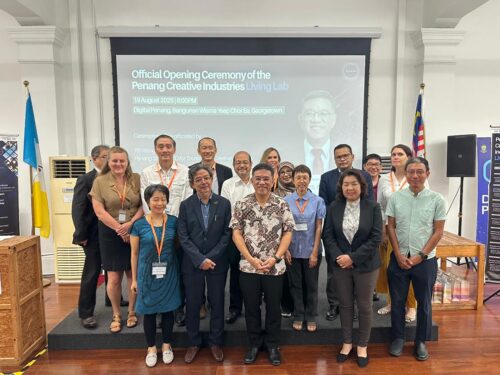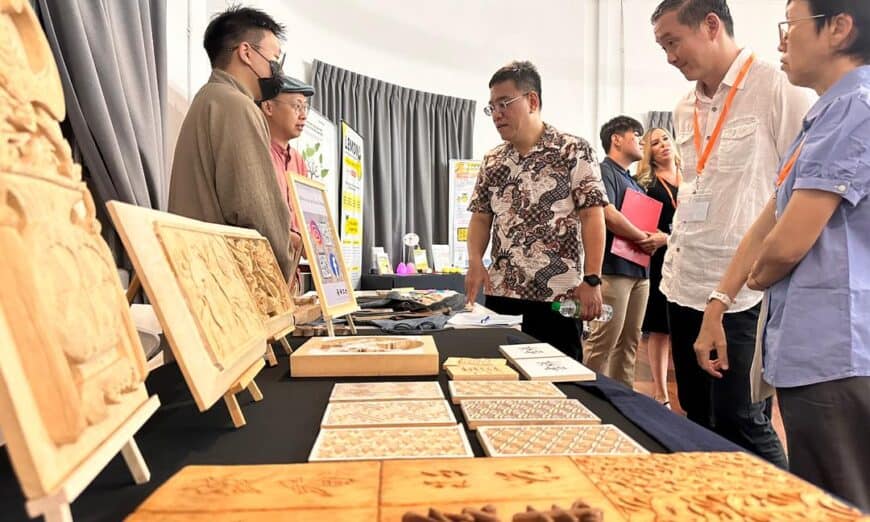THE future lies in transforming creativity into opportunity, where artistic expression and entrepreneurship converge, said state Tourism and Creative Economy Committee chairman Wong Hon Wai.
Wong shared this during the launching ceremony of the ‘Penang Living Lab for Advancing the Creative Economy’ (PLLACE) on Aug 19 at Digital Penang’s premises located at Wisma Yeap Chor Ee.
Spanning a full week, the programme focuses on strengthening the creative economy through meaningful collaboration, open dialogue, and innovation.
According to Wong, the creative economy is no longer a side story in Penang, it has become a central pillar in shaping the state’s cultural and economic identity.
“But like any sector that is growing, we must also acknowledge the challenges, from policies that need fine-tuning to the realities of entrepreneurship and the urgent need for brand awareness on the global stage.

“This is exactly why the Living Lab approach is important.
“It allows us to test new ideas in real-world environments, co-create solutions, and most importantly, give ownership to the grassroots and creative communities themselves,” he added.
Apart from that, Wong stressed that the government cannot act alone, a bottom-up approach, driven by grassroots participation, is essential.
“This Living Lab is not just an event, it is an experiment in making creativity self-sustaining.
“It is about building an ecosystem that generates income, creates jobs, and opens up opportunities for Penangites.
“We envision the Living Lab as a platform where tourism connects with local markets, where intellectual property is nurtured, and where the arts intersect with entrepreneurship,” he said.
Wong highlighted that while the state government will continue to provide support and create platforms, the responsibility to drive the creative economy ultimately lies with Penang’s own talents, the entrepreneurs, artists, and innovators.

Wong cited the nation’s own Kebaya Nyonya, recognised as a UNESCO Intangible Cultural Heritage, as a prime example, especially after it recently gained international attention when featured in the filming of the Miss Hong Kong Pageant in Penang.
“This is the first time in the 80-year history of the Miss Hong Kong Pageant that filming took place in Penang.
“It was not only a proud moment for us, but also a clear example of how government support and private sector creativity can work hand in hand to unlock new opportunities.
“Following the broadcast, international viewers began asking, ‘Where can I buy the kebaya?’ That is a perfect illustration of how creative expression can be transformed into economic value,” Wong said.
On the local front, Wong shared that the Malaysia International Miniature Hobby Show and Competition (MIMHS-MALCOM), held annually in Penang, is a strong example of creative excellence emerging from the state.
“Recognised as the largest miniature hobby show in Southeast Asia, it attracts global hobbyists and has positioned Penang as a notable player within an international creative niche.
“It now stands alongside prestigious events such as the Hungary Moson Model Show, the Netherlands’ Scale Model Challenge, Thailand’s AK Interactive International Competition, China’s Model World Saga in Guangzhou, and Japan’s Shizuoka Hobby Show.
“Penang’s expanding creative presence, can also be seen in its cosplay and animation festivals, as well as trading card game tournaments like Pokémon competitions, all of which continue to gain momentum both locally and internationally,” he said.

Wong also shared that inspiration has been drawn from global innovations such as virtual concerts by digital icons like Hatsune Miku.
It is learned that this year’s George Town Festival, featured something particularly unique, ‘Crab Chronicle’, an immersive VR experience that allows audiences to explore Penang through the perspective of crabs, creatively blending technology, nature, and storytelling.
The programme is organised by the PLLACE research team, comprising Katharina De Vita and Malgorzata Trelka from Manchester Metropolitan University ; Jin Hooi Chan and Athena Piterou from University of Greenwich; Wan Teng Lai, Bea Jia Hui, Chan Swee Juan, and Hooi Hooi Lean from Universiti Sains Malaysia ; as well as Toh Teong Chuan and Cham Kaiwen (Universiti Tunku Abdul Rahman -UTAR).
It is supported by the Penang Women’s Development Corporation (PWDC), Penang Institute, and Penang Art District, with additional backing from Living Lab strategic partners, Digital Penang, the Malaysia Digital Economy Corporation (MDEC), and the Malaysian Creativepreneurs Strategic Alliance (MCSA).
For updates pls visit PLLACE’s official Facebook page at https://www.facebook.com/share/17ShfJKzfh/?mibextid=wwXIfr
Story by Tanushalini Moroter
Pix by Muhamad Amir Irsyad Omar

